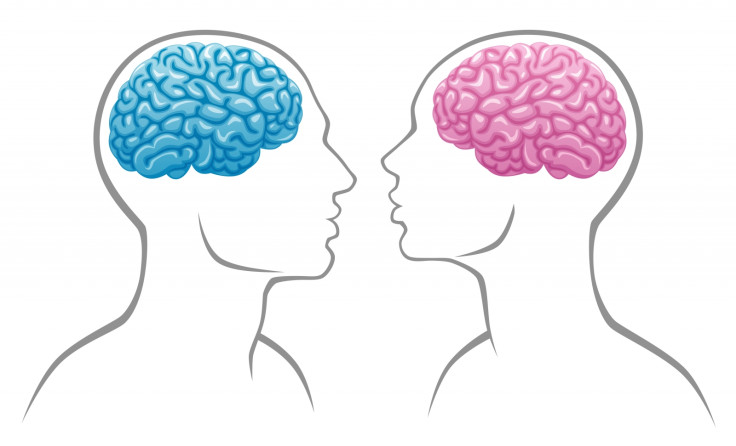Size, circuits and hormones: Do men and women really have different brains?
A controversial exhibition has restarted the debate about whether the brains of the sexes are different and if so - how.

London's Science Museum has faced harsh criticisms after it opened an exhibition which asked visitors to test whether they had a "blue" or "pink" brain. The idea was that after responding to a series of questions, they would be able to find out whether their brains were more male or female.
Some neuroscientists have dismissed the interactive exhibition as "junk science", as The Guardian reports, pointing out that there was limited scientific evidence that women and men's brains were fundamentally different – and that these claims served only to reinforce gender stereotypes.
IBTimes UK takes a look at the research that has recently been published on the subject, to understand what has been said so far on the highly controversial concept of "gendered brains".
Similar anatomies and structures of the brain
The theory that men and women's brains are different is based on the fact that a number of mental health disorders affects both gender differently, and at different rates. Diseases such as autism spectrum disorder and dyslexia are more common in men, while depression and anxiety are more common in women. Furthermore, scientists recognise that in all animal species – humans included – males and females behave differently when faced with given social signals.
However, throughout scientific literature, there is very little evidence that the structures of male and female brains are different. In fact, scientists find more similarities than differences, and have been unable to divide brain types into two, neatly separated groups depending on people's sexes.
What they do find is that human brains are better characterised as "mosaics" which cannot be explained purely in biological terms - such as with gender differences. Behavioural differences between men and women thus do not appear to depend on brain structures.
Different usage of brain circuits
A recurrent hypothesis is that males and females have similar neuronal circuits, but these circuits may be regulated in a sex-specific way, which may explain behavioural variations.
For example, experiments in mice led by Professor Catherine Dulac from the University of Harvard, have revealed that a set of neurons in the rodents – the preoptic area – controls maternal behaviour. These neurons are also found in the brains of males that are not spontaneously paternal.
Yet when these neurons are specifically activated during the experiment, male mice displayed parental behaviours, much in the same way as females.
More studies, including on humans, need to be carried out to better understand if brain circuits are used in different ways depending on the gender, how so, and what the consequences of this are for behaviour and mental health.
Different sizes of the brain and hormone levels
Some studies show that the male brain is on average larger than the female brain, but there are no evidence that this translates into cognitive differences. It is also unclear how this impacts behavioural differences between both sexes.
In 2014, research by the University of Cambridge and the University of Oxford was one of the first to systematically search scientific literature to identify studies analysing the differences in brain structure between men and women, and then to conduct a meta-analysis. The main findings were that men had a larger overall brain volume than women - between 8% and 13% larger. Differences were also identified in the volume of various specific regions of the brain.

This does not prove anything about whether men and women are different when it comes to cognition. Such research only aims to identify candidate brain areas to investigate, to better understand how and why male and female brains differ in their predisposition for mental health disorders.
Beyond matters of size, scientists also point out that men and women display different levels of hormones in their brains. But again, this relates more to reproductive processes rather than to cognition.
Neuroplasticity and the environment
When studying the brain, considering neurplasticity is crucial – it is a malleable organ. Brain structure and function are known to change in response to experience and to environmental factors so it is possible that any observed differences between the brains of men and women are linked to differences in upbringing and social context, although studies to confirm this are lacking.
Bottom line is, neuroplasticity and structural variations cannot be explained by biological differences alone. The structure of the brain evolves for every individuals depending on factors that can have nothing to do with their gender, so it is problematic to use the male/female dichotomy to explain differences between brains. When comparing brains, it's necessary to know more than just the sex of their owners and to consider what makes all brains so different.
© Copyright IBTimes 2024. All rights reserved.






